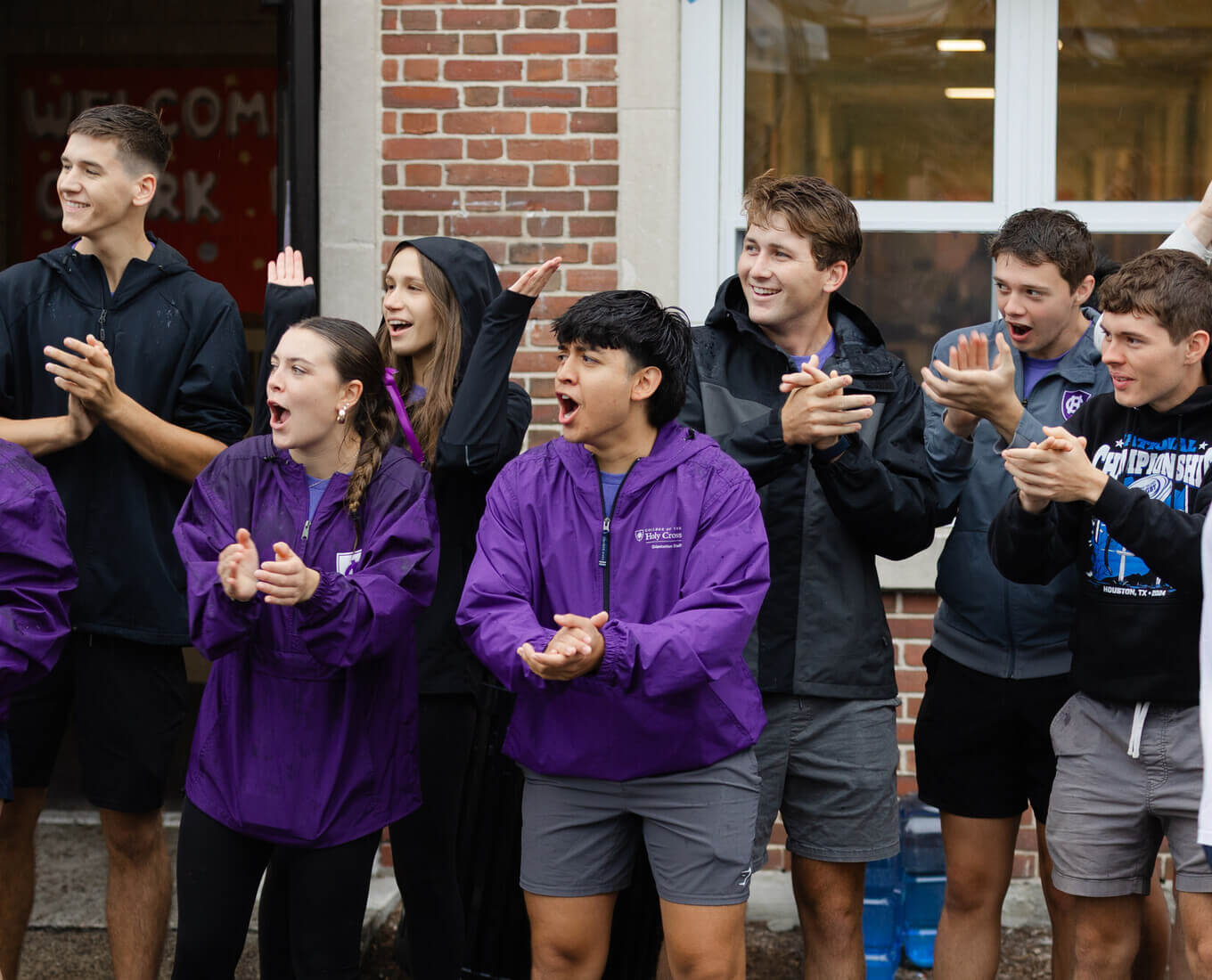 Eureka!
Eureka!
A team of Holy Cross students, together with students from Furman University, will be helping to create an electronic edition of a tenth century manuscript of the great mathematician Archimedes.
The manuscript was recycled when the original text (the palimpsest) was scraped off, and overwritten to create a prayer book in the 13th century. The discovery of the palimpsest in 1906 created a sensation in the scholarly world because it includes works of Archimedes that are nowhere else preserved. The manuscript disappeared during the First World War, and only resurfaced in the 1990s. For the past decade, the Archimedes Project, made up of an international team of scholars, has worked on the conservation of the badly damaged text. With the aid of digital imaging processing, the project has been able to bring out parts of the palimpsest not previously legible.
Now, 10 Holy Cross classics majors (and a group of undergraduate Greek students at Furman University) will work with digital photography and initial transcriptions of the palimpsest by classicists at Oxford and Stanford universities. After adding accents and punctuation to the bare letters recorded in the manuscript, the students will create documents structured in XML following the guidelines of the Text Encoding Initiative. The resulting electronic texts can be used to generate print editions and web pages, or can be queried and manipulated interactively.
The XML texts can also be coordinated with the digital images to make possible illustrated interactive editions unlike anything that can be achieved in print. A second team of three Holy Cross students will be working in parallel with the editorial team to evaluate the effectiveness of different approaches to indexing texts and images.
The Holy Cross editorial team is made up of: Jennifer Adams ’10, Jennifer Curtin ’10, Christopher D’Alessandro ’10, William G. Dolan ’10, Scott Dube ’10, Michael Kinney ’10, Joshua Whelan ’10, Katherine Schmieg ’09, Patrick Walsh ’09, and Stephanie Wheeler ’09.
The following students are participating in the experimental indexing of texts and images: Michael McGlinn ’08, Greg Kakas ’08 and Danielle Bacon ’09.
The Holy Cross group is directed by Neel Smith, associate professor of classics, who says it’s especially notable that undergraduates are carrying out this work.
“Certainly there are graduate students who have more years of study and could devote more uninterrupted time to a project like this one, but their training is often so narrowly focused that neither they nor their faculty mentors would know where to begin work on an electronic edition like this one,” Smith said. “Here at Holy Cross, we have the luxury of collaborating with students with an impressive command of Greek, who at the same time can see their study of classics as part of a broader experience of the liberal arts.”
Archimedes was arguably the greatest mathematician of antiquity. His writings creatively blend ideas from pure and applied mathematics to solve an astonishing range of problems, from whimsical puzzles to fundamental mathematical values (he showed how to approximate pi to an arbitrary degree of precision, for example), and mathematical models for physics (e.g., in hydrostatics, and mechanics).
More information about the Archimedes Palimpsest.
Related Information:
• Classics
Everything Old is New Again
Read Time
2 Minutes

